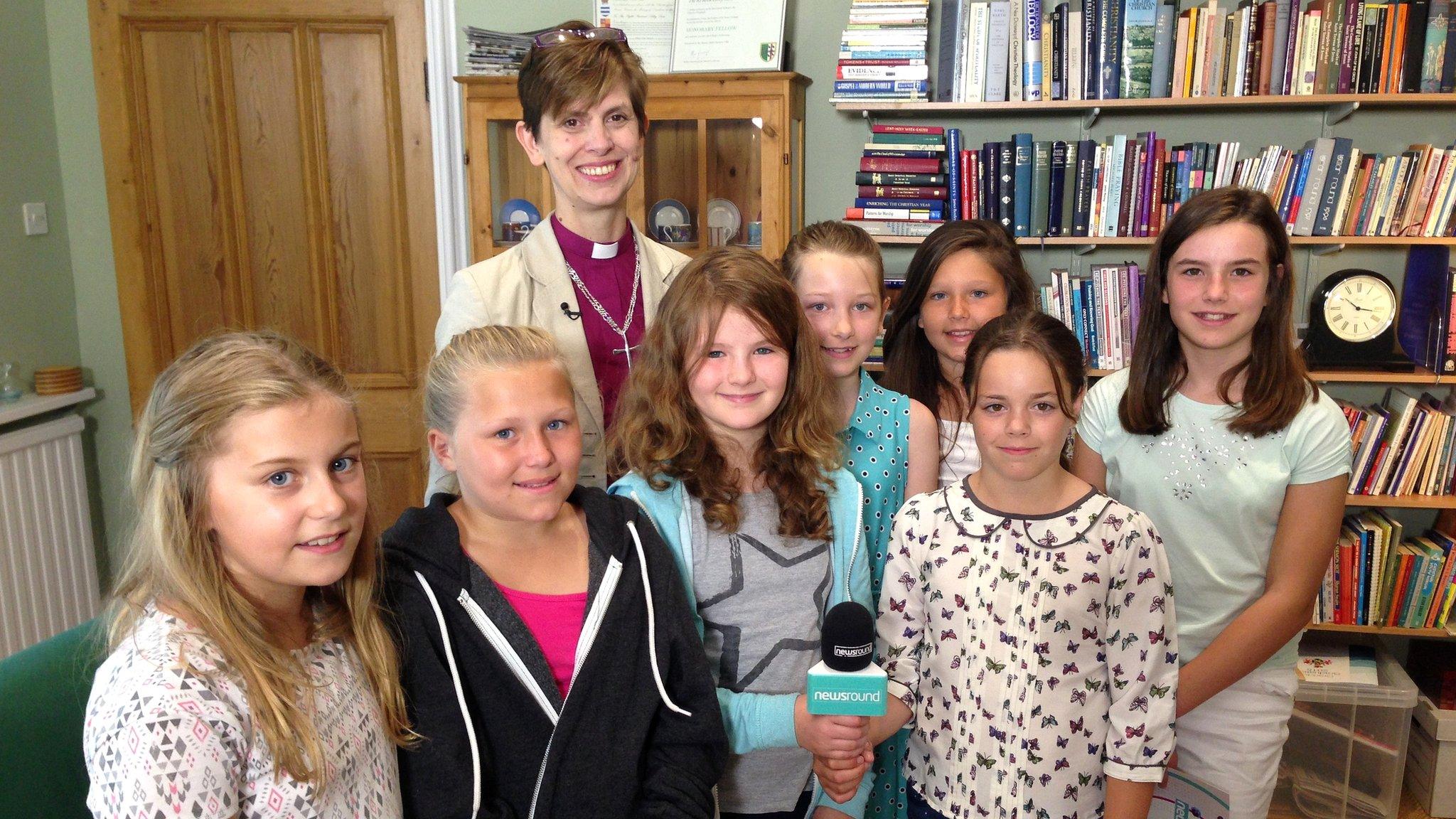Westminster Abbey: Fun facts to mark 750th anniversary
- Published
- comments
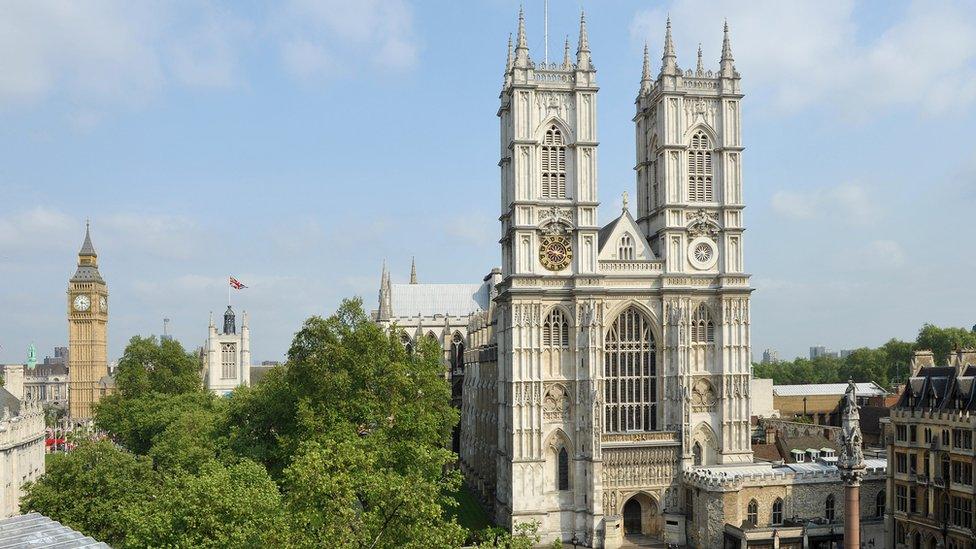
This photo shows Westminster Abbey in London with the Houses of Parliament in the background
It is a big week for Westminster Abbey, as it marks 750 years since it was rebuilt as we know it today.
Benedictine monks founded Westminster Abbey in 960AD, but the church as it is seen in modern times, dates back to Henry III in 1245 when he decided to rebuild it in the new Gothic style of architecture.
On 13 October 1269 - almost exactly 750 years ago - it was consecrated (that means it was declared sacred and a place of worship).
It is a very important building in British history and culture, having been the coronation church for British monarchs since 1066.
The gothic landmark also attracts millions of tourists every year.
To celebrate its 750th anniversary, the Queen and the Duchess of Cornwall attended a special service there this week.
Read on to find out more about the iconic abbey.
1. It's actually a 'Royal Peculiar'
Westminster Abbey was originally an abbey for Benedictine monks to live and worship in, but it was dissolved by Henry VIII in 1540.
It is now a 'Royal Peculiar', which is a church under the direct control of the monarch.
Its full name is the Collegiate Church of St Peter, Westminster.
Westminster Abbey was designed to be not only a great monastery and place of worship, but also a place for the coronation and burial of monarchs.
2. It's a burial site for kings, queens and public figures
Westminster Abbey is the final resting place for 17 monarchs.
But there are also many other high-profile figures who are remembered there, including Sir Isaac Newton - one of the most influential scientists of all time - who discovered gravity.
There is also an area called Poet's Corner where more than 100 poets and writers - including William Shakespeare, Jane Austen, the Bronte sisters and Charles Dickens - are buried or remembered.
3. The Coronation Chair has graffiti on it
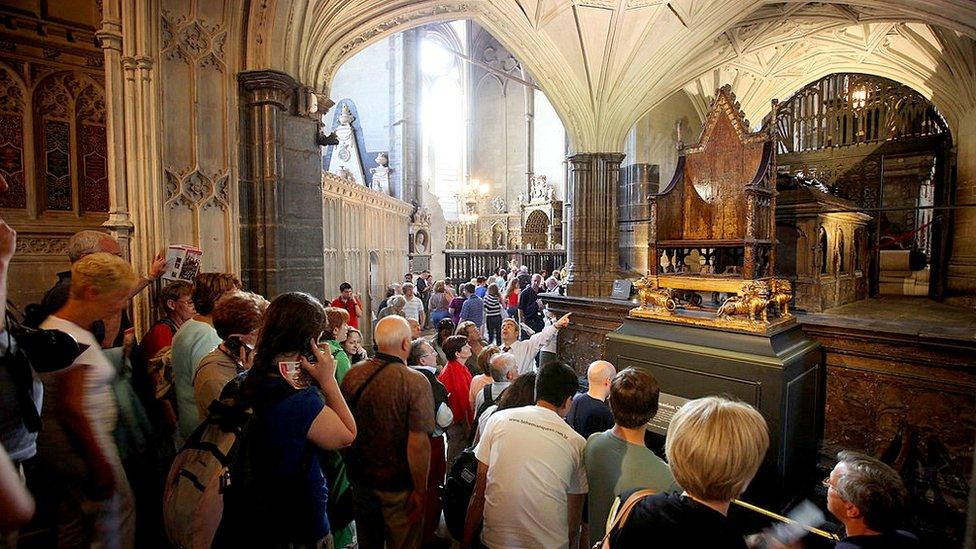
The Coronation Chair - being admired by tourists in this photograph - is described by the abbey as "one of the most precious and famous pieces of furniture in the world"
Inside the Abbey is King Edward's Chair - better known as the Coronation Chair - where each monarch sits on his or her coronation.
It is described on the abbey's website as "one of the most precious and famous pieces of furniture in the world", made by order of King Edward I.
If you look closely, you can see it's actually covered in graffiti, which is thought to be the work of visiting school kids from the 1700 and 1800s!
One even carved "P. Abbott slept in this chair 5-6 July 1800" on the seat!
4. Sixteen royal weddings have taken place there
Royals often choose the abbey as the venue for their weddings.
It was where Prince William and Kate Middleton - now the Duke and Duchess of Cambridge - held their ceremony in 2011.
It was also where Queen Elizabeth II married Lieutenant Phillip Mountbatten in 1947.
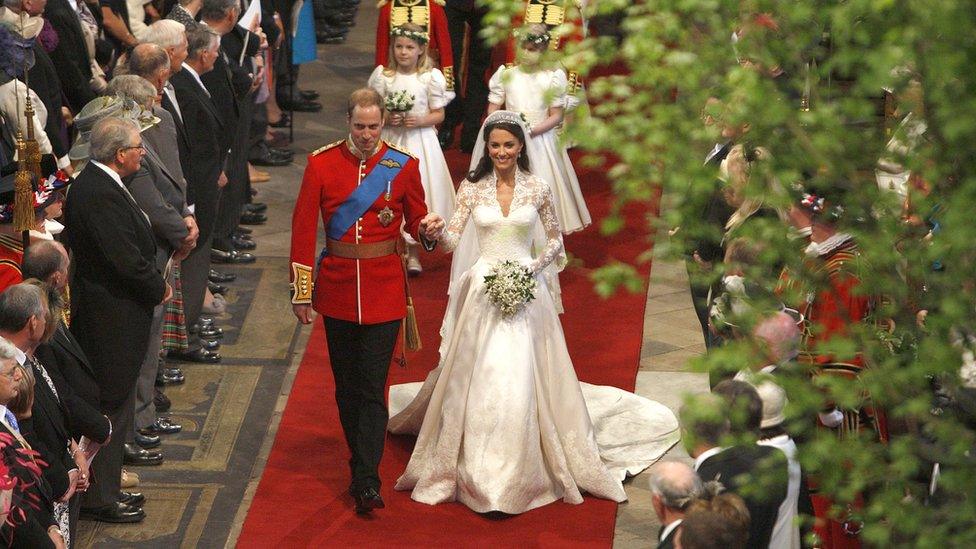
The Duke and Duchess of Cambridge were married at Westminster Abbey on 29 April 2011
5. It was heavily protected during World War Two
When World War Two broke out in 1939, the abbey and its treasures needed to be protected.
Effigies, manuscripts, statues and gates were evacuated to keep them safe. The Coronation Chair was taken to Gloucester Cathedral, while the Coronation Stone was secretly buried somewhere in the Abbey.
Some of the stained glass windows were boarded up, but unfortunately a lot of glass was destroyed in the conflict.
It wasn't possible to move everything though, and around 60,000 sandbags were used to protect unmoveable royal and medieval tombs.
On VE Day on 8 May 1945, special services were held every hour in the abbey to give thanks for the end of the fighting, from 9am all the way through to 10pm.
6. It has a very special grave of an unknown warrior
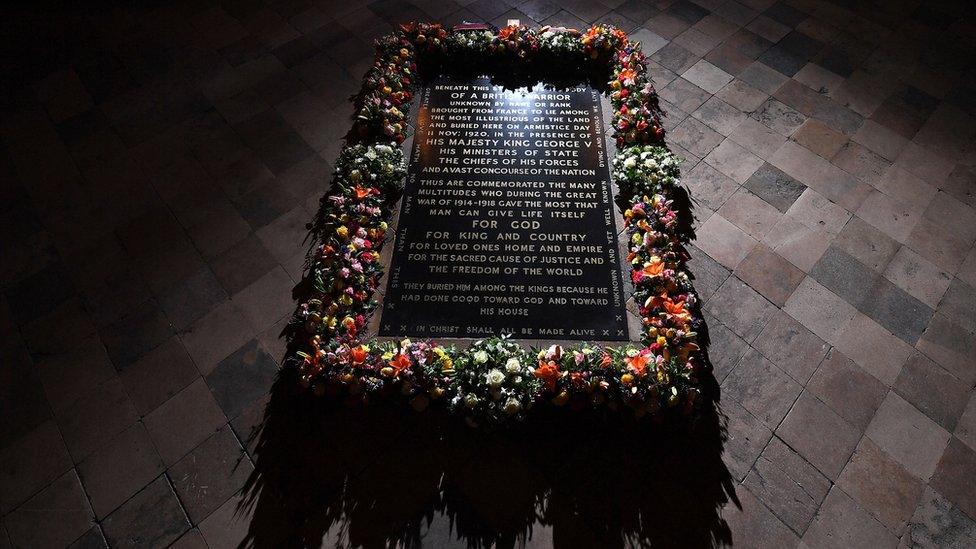
This is the tomb of the Unknown Warrior. The British soldier, who was killed on a European battlefield during the First World War, has never been identified
At the end of the nave in the abbey, there is a special memorial called the grave of the Unknown Warrior.
In the grave is the body of a soldier brought over from France at the end of World War One and buried in the abbey 11 November 1920 (Remembrance Day). The grave also contains soil from France.
The idea is that people who did not have a grave to visit to grieve loved ones lost in the war, could come to this place, as nobody knew who the soldier was. You can find out more about it with BBC Bitesize.
- Published30 July 2019
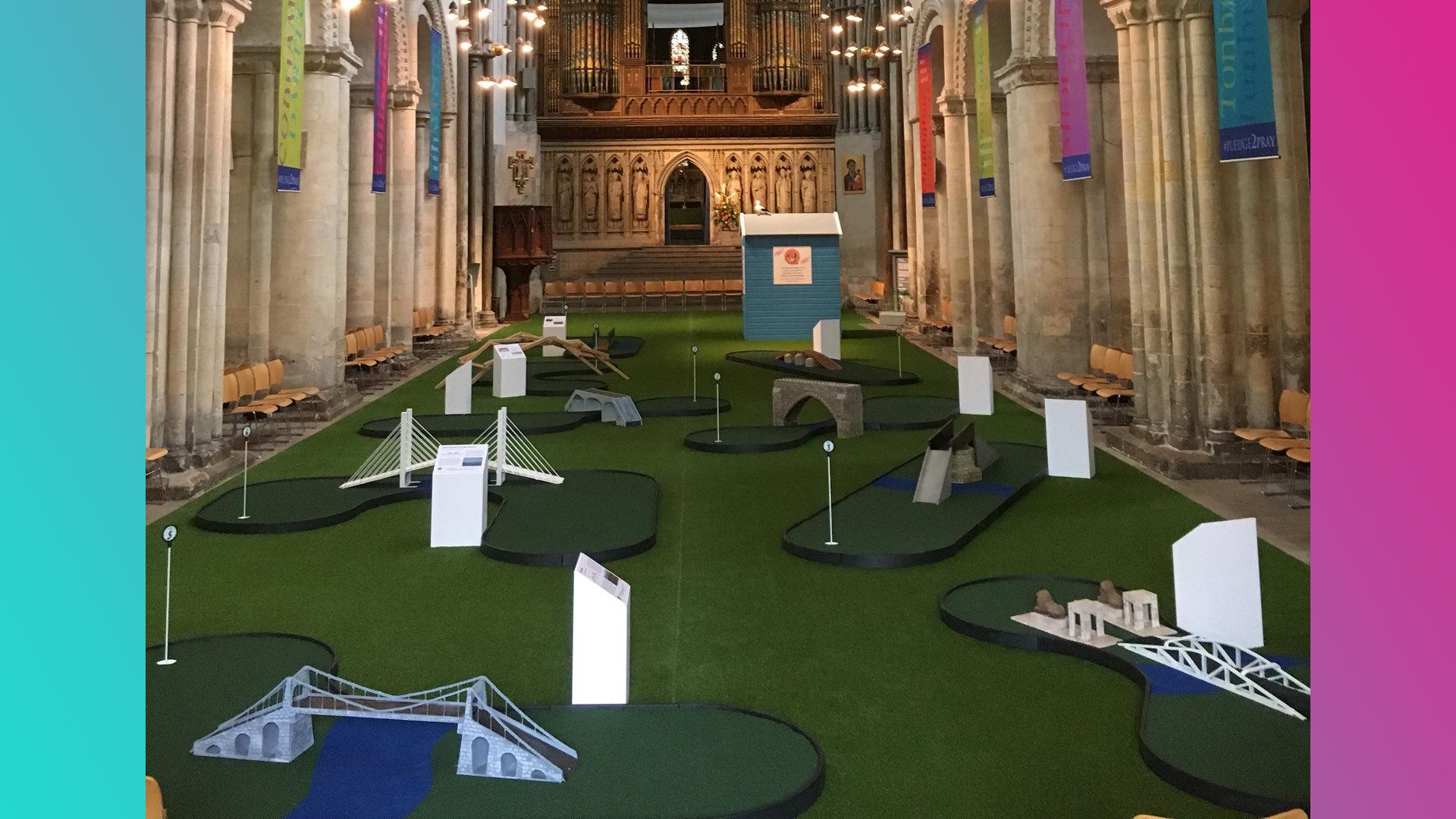
- Published28 December 2016
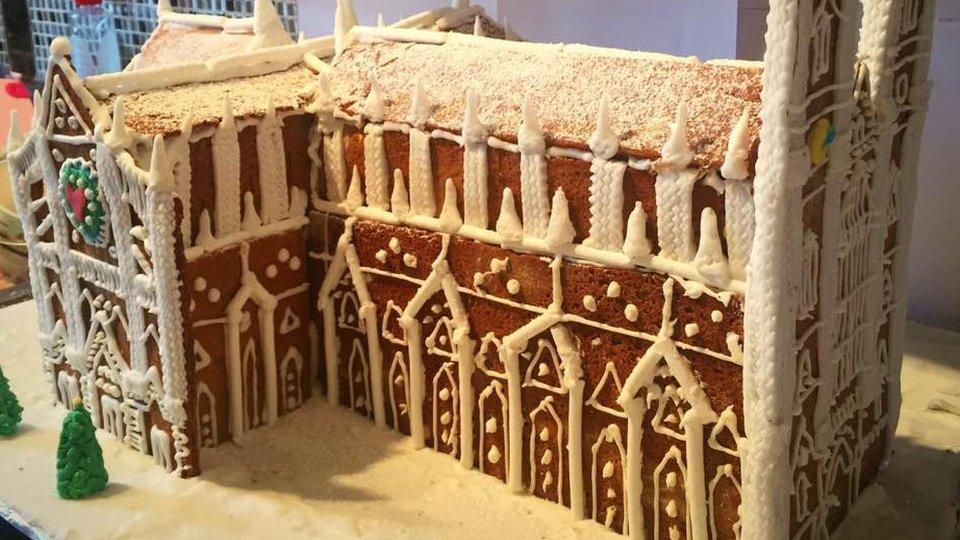
- Published16 April 2019
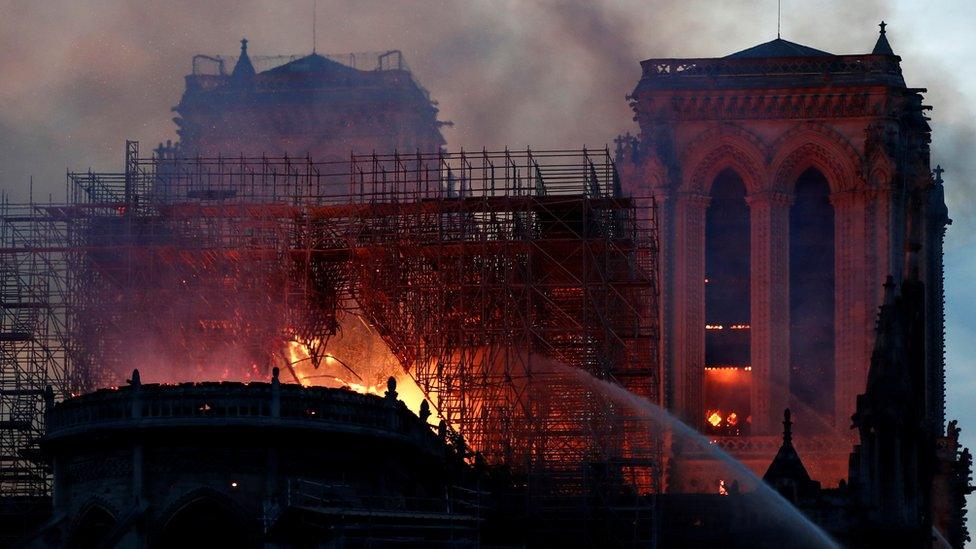
- Published18 August 2015
